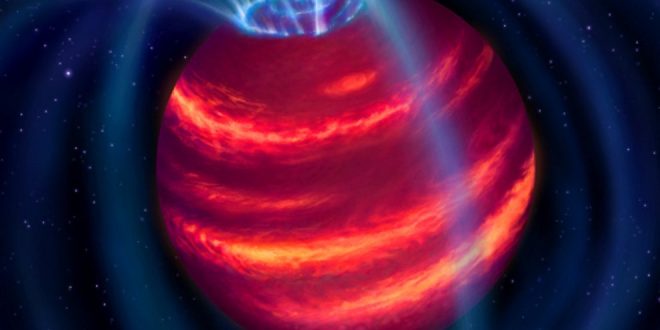Astronomers have discovered a cold brown dwarf – otherwise known as a “super planet” – for the first time using a radio telescope.
Brown dwarfs are vast, sized between 15 and 75 times the mass of Jupiter, and have gaseous atmospheres similar to some of the planets in our solar system. They are also often known as “failed stars” because of the way that they shine.
Planets shine by reflecting light, while stars shine by producing their own light. Despite being so big, brown dwarfs are not able to sustain the nuclear fusion of hydrogen into helium – which causes stars to shine – hence their name.
Radio emissions have only been detected from a small number of brown dwarfs, and all of those had been detected by infrared surveys beforehand.
Discovering this brown dwarf through radio telescopes shows that astronomers can detect objects too cold and faint to be picked up by infrared surveys. This opens the doors to the detection of other bodies like free-floating gas-giant exoplanets.
“We asked ourselves, ‘Why point our radio telescope at catalogued brown dwarfs?’” said Harish Vedantham, lead author of the study and astronomer at ASTRON (the Netherlands Institute for Radio Astronomy).
“Let’s just make a large image of the sky and discover these objects directly in the radio.”
Elegast was discovered using the data from the Low-Frequency Array (LOFAR) telescope in Europe, and then confirmed using telescopes on the summit of Maunakea in Hawai’i.
The new research was published in the Astrophysical Journal Letters on 9 November, authored by Vedantham and co-authored by astronomer Michael Liu and graduate student Zhoujian Zhang.
“This work opens a whole new method to finding the coldest objects floating in the Sun’s vicinity, which would otherwise be too faint to discover with the methods used for the past 25 years,” said Liu.
This discovery could also help astronomers measure exoplanets’ magnetic fields, as cold brown dwarfs are the most similar bodies to exoplanets that scientists can measure with radio telescopes.
As such it could shed new light on predicting another planet’s magnetic field, which is vital in determining its atmospheric properties and the evolution of other worlds.
The Independent
 Lebanese Ministry of Information
Lebanese Ministry of Information



